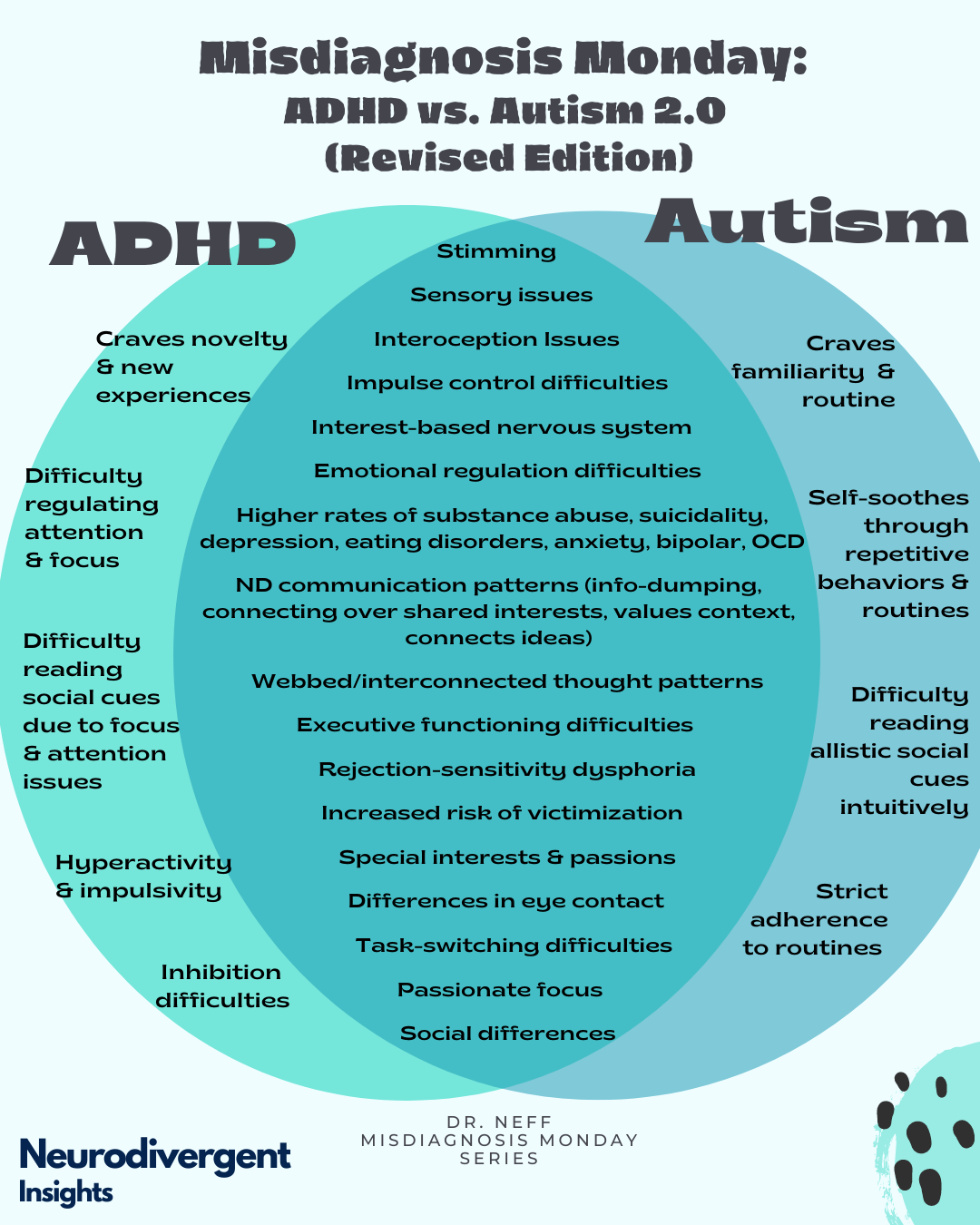Understanding ADHD: A Journey Inside Our Minds

Table of Contents
Recognizing the Symptoms of ADHD
ADHD manifests differently in individuals, making diagnosis challenging. However, several key symptoms consistently appear across those diagnosed. These symptoms are categorized into three main areas: inattentiveness, hyperactivity, and impulsivity. Recognizing these symptoms is the first step in seeking help and understanding ADHD.
Inattentiveness: The Struggle to Focus
Inattentiveness is a core symptom of ADHD, characterized by difficulty sustaining attention and easily becoming distracted. This isn't simply daydreaming; it's a persistent struggle to focus on tasks, even those of personal interest.
- Trouble listening: Difficulty following conversations, especially in noisy environments. This can lead to misunderstandings and missed information.
- Losing things: Frequently misplacing essential items like keys, phones, or assignments. This can create significant stress and frustration.
- Disorganized: Struggling with planning and organization, leading to missed deadlines and incomplete tasks. This extends beyond simple clumsiness to a fundamental challenge with executive function.
- Difficulty following instructions: Struggling to complete multi-step instructions, often missing crucial steps or getting sidetracked.
Inattentiveness presents differently in children versus adults. Children might show this through excessive daydreaming in class or difficulty completing homework. Adults might struggle with maintaining focus at work, managing finances, or following through on commitments. While some individuals with ADHD experience hyperfocus – intense concentration on a single task – this is often a paradoxical symptom and doesn't negate the underlying difficulties with sustained attention. Keywords: attention deficit, inattention, distractibility, hyperfocus.
Hyperactivity: Excess Movement and Restlessness
Hyperactivity encompasses excessive movement, restlessness, and fidgeting. This isn't simply being energetic; it's a constant state of physical restlessness that can be disruptive and exhausting.
- Difficulty sitting still: Inability to remain seated for extended periods, resulting in constant shifting, tapping, or pacing.
- Excessive talking: Interrupting conversations frequently, often without realizing it, and speaking excessively.
- Interrupting conversations: Butt in on conversations, often without considering the impact on others.
It's crucial to differentiate between typical childhood energy and hyperactivity. While all children are active, children with ADHD exhibit hyperactivity that is excessive, persistent, and significantly impairs their daily functioning. Keywords: impulsivity, restlessness, fidgeting, hyperactive behavior.
Impulsivity: Acting Without Thinking
Impulsivity is the tendency to act without thinking, leading to hasty decisions and poor judgment. This can impact relationships, academics, and professional life.
- Making hasty decisions: Acting quickly without considering potential consequences. This can lead to regrettable actions and poor outcomes.
- Blurting out answers: Responding impulsively without waiting for their turn to speak.
- Difficulty with turn-taking: Struggling to share and cooperate in activities that require taking turns.
The impact of impulsivity can be significant. It can strain relationships due to emotional outbursts or insensitive remarks. Academically, it can lead to poor grades and behavioral problems. Professionally, it can result in job losses or missed opportunities. Keywords: impulsive behavior, poor decision-making, emotional regulation.
The Diagnostic Process for ADHD
Diagnosing ADHD requires a comprehensive evaluation by a healthcare professional. It's a process that aims to identify the presence and severity of ADHD symptoms, while also ruling out other potential conditions that may present similar symptoms.
Seeking Professional Help: The Importance of a Comprehensive Evaluation
The first step in understanding your ADHD is seeking professional help. A comprehensive evaluation is essential to receive an accurate diagnosis and develop an effective treatment plan.
- Medical history review: A detailed review of medical and family history to identify potential contributing factors.
- Behavioral assessments: Observation of behavior in various settings to assess the presence and severity of ADHD symptoms.
- Psychological testing: Standardized tests to measure attention, impulsivity, and hyperactivity levels.
Professionals who can diagnose ADHD include psychiatrists, psychologists, and pediatricians specializing in developmental disorders. A thorough evaluation helps rule out other conditions that may mimic ADHD symptoms, ensuring an accurate diagnosis. Keywords: ADHD diagnosis, psychological evaluation, ADHD testing, psychiatrist, psychologist.
DSM-5 Criteria: The Standard for ADHD Diagnosis
The Diagnostic and Statistical Manual of Mental Disorders, 5th Edition (DSM-5), provides the criteria used to diagnose ADHD. Meeting these criteria is crucial for a formal diagnosis.
- Symptoms present before age 12: Symptoms must have been present before the age of 12, although they may not have been recognized or diagnosed until later in life.
- Symptoms persist for at least 6 months: Symptoms must be present consistently for at least six months to meet diagnostic criteria.
- Symptoms significantly impair functioning: The symptoms must cause significant impairment in social, academic, or occupational functioning.
The DSM-5 also identifies three subtypes of ADHD: predominantly inattentive, predominantly hyperactive-impulsive, and combined. Understanding the subtype helps tailor treatment strategies. Keywords: DSM-5 criteria for ADHD, ADHD subtypes, ADHD assessment.
Effective Management Strategies for ADHD
Managing ADHD effectively often involves a multifaceted approach combining medication, therapy, and lifestyle adjustments. A personalized plan is key to success.
Medication: Supporting Brain Function
Medication plays a significant role for many individuals with ADHD. Stimulants and non-stimulants can help manage core symptoms, improving focus, reducing impulsivity, and controlling hyperactivity.
- Stimulants and non-stimulants: Different types of medication with varying mechanisms of action, offering options to find the best fit for each individual.
- Potential side effects: While medication is highly effective, it's important to be aware of potential side effects and discuss them with your doctor.
- Individualized treatment plans: Medication dosage and type should be tailored to each individual's needs and response.
Medication works by affecting neurotransmitters in the brain that regulate attention and impulse control. Regular monitoring is essential to ensure the medication is effective and adjust as needed. Keywords: ADHD medication, stimulants, non-stimulants, side effects of ADHD medication.
Therapy: Developing Coping Mechanisms
Therapy provides valuable tools and techniques for managing ADHD. Different therapeutic approaches can address specific challenges associated with ADHD.
- Cognitive Behavioral Therapy (CBT): Helps individuals identify and change negative thought patterns and behaviors that contribute to ADHD symptoms.
- Behavioral Therapy: Focuses on teaching coping mechanisms and strategies for managing impulsive behaviors and improving organization skills.
- Parent Training: Provides parents with effective strategies for supporting their children with ADHD at home.
Therapy helps individuals develop coping mechanisms for everyday challenges, improve self-esteem, and build stronger relationships. Keywords: ADHD therapy, CBT for ADHD, behavioral therapy for ADHD, parent training for ADHD.
Lifestyle Adjustments: Supporting Overall Well-being
Lifestyle adjustments can significantly impact ADHD symptoms. Simple changes can improve focus, organization, and overall well-being.
- Regular exercise: Physical activity improves focus and reduces hyperactivity.
- Healthy diet: Nutritious foods provide the brain with the nutrients it needs to function optimally.
- Sufficient sleep: Adequate sleep is crucial for cognitive function and emotional regulation.
- Organizational tools and techniques: Using planners, calendars, and other organizational tools can improve time management and reduce stress.
Implementing these lifestyle changes can make a noticeable difference in managing ADHD symptoms and improving overall quality of life. Keywords: ADHD lifestyle changes, ADHD diet, ADHD sleep, organizational skills for ADHD.
Conclusion: Embracing the Journey with ADHD
Understanding ADHD is a journey of self-discovery and management. By recognizing the symptoms, seeking professional help, and implementing effective management strategies, individuals with ADHD can lead fulfilling lives. Remember, managing ADHD is a collaborative process involving medical professionals, therapists, family, and the individual. Don’t hesitate to seek further information about ADHD and its treatment options. Take the first step toward a better understanding of ADHD and its effective management today.

Featured Posts
-
 Norfolk Catholics District Final Loss To Archbishop Bergan
May 13, 2025
Norfolk Catholics District Final Loss To Archbishop Bergan
May 13, 2025 -
 Diddys Ex Cassie Ventura Announces Third Pregnancy
May 13, 2025
Diddys Ex Cassie Ventura Announces Third Pregnancy
May 13, 2025 -
 Ali Larter Opens Up About Long Term Relationship With Billy Bob Thornton
May 13, 2025
Ali Larter Opens Up About Long Term Relationship With Billy Bob Thornton
May 13, 2025 -
 Is The Byd Seal Right For You A Detailed Buyers Guide
May 13, 2025
Is The Byd Seal Right For You A Detailed Buyers Guide
May 13, 2025 -
 Sabalenka Triumphs Over Gauff At Madrid Open
May 13, 2025
Sabalenka Triumphs Over Gauff At Madrid Open
May 13, 2025
